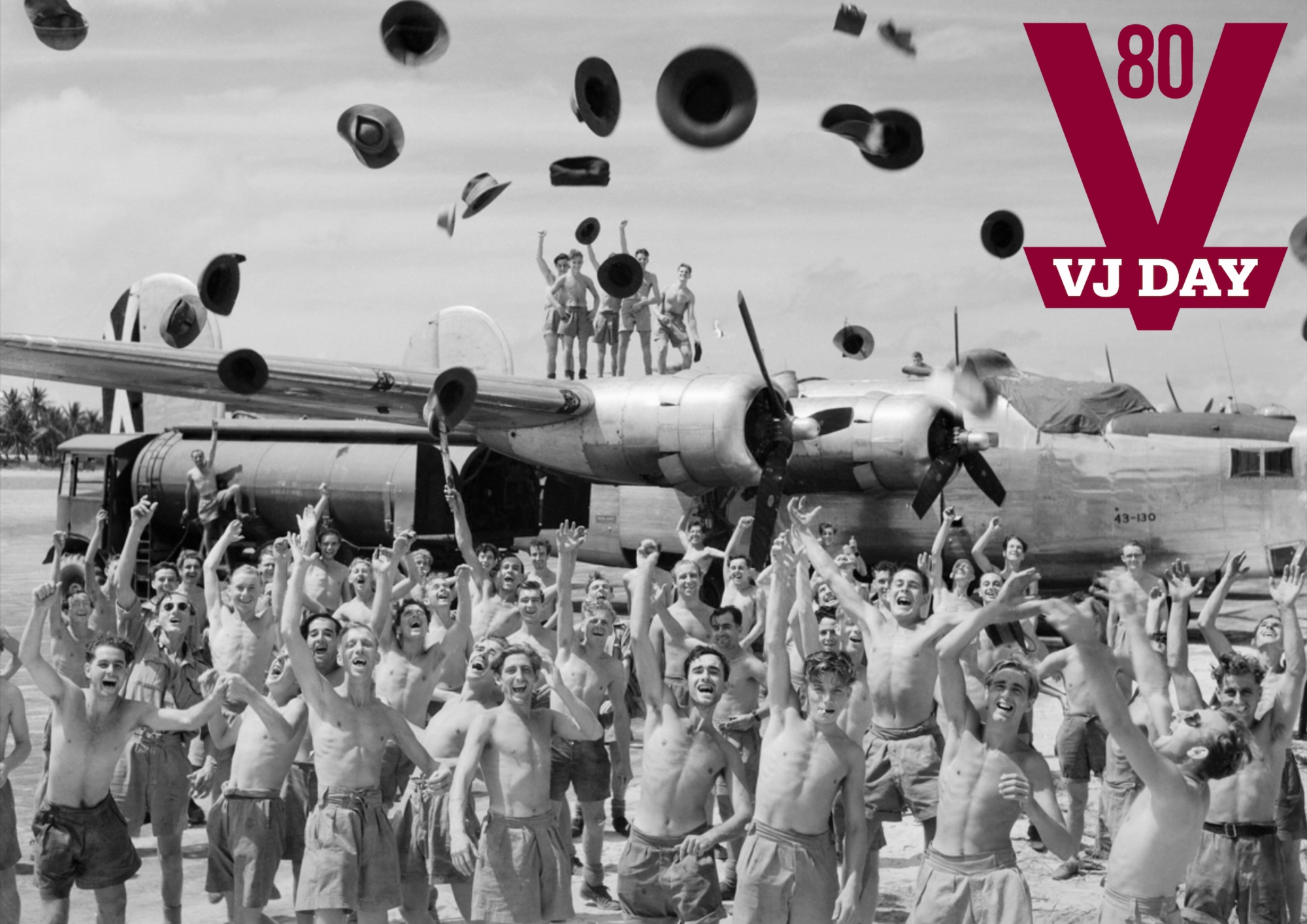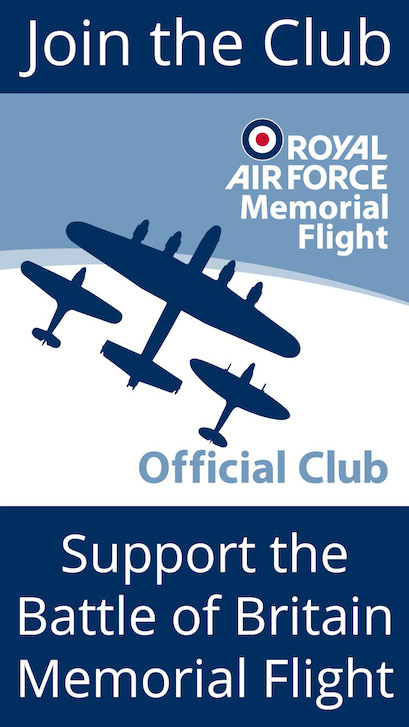Victory over Japan (VJ Day) and Far East POW relief
Header image: RAF ground crews of 356 Squadron, based in the Cocos (Keeling) Islands in the Indian Ocean, celebrate VJ Day, with a long-range Consolidated Liberator B Mk VI behind them.
The Japanese surrender in August 1945, celebrated as VJ Day on 15th August in Britain, was a cause of joy for many, especially those still involved in the fighting and operations in Burma and the Far East. Victory in Europe (VE Day) had been celebrated back in Britain on 8th May 1945 and for those still fighting a fanatical enemy in the Far East there was every reason for them to feel forgotten. It is important that we mark VJ Day just as the national commemorations did for VE Day earlier this year.
With the end of hostilities, the Allied servicemen and women would have been hoping for some ‘down time’ and to go home. However, there was still much to do, territory to reoccupy, hundreds of thousands of Japanese troops to disarm and repatriate, and, of course, the problem of the many Allied soldiers, sailors and airmen – plus civilian internees – who had endured the hardships and privations of Japanese POW camps. The fighting may have stopped, but deployed units were no less reliant on a steady flow of supplies, and the situation was even more acute for those deep behind Japanese lines, including the POWs. The estimated 140,000 POWs and internees were no longer prisoners, but their survival was still in the balance. Post war research found that just over 27 percent of Western Allied POWs did not survive Japanese captivity – seven times the death rate in German and Italian POW camps – and the effects of years of abuse, maltreatment, disease and starvation were rife.

There was an urgent humanitarian requirement to airdrop supplies and relief teams into Allied POW camps scattered across the vastness of southeast Asia and in Japan itself. This resulted in a marked increase in activity for some RAF transport units, especially the long-range Special Duties squadrons. Two of these, 357 and 358 (SD) Squadrons, had been supporting the SOE’s Force 136 in Japanese-held territories in Burma and other resistance groups in Thailand and Malaya for some time, dropping agents and supplies at night from airfields in India. More recently, 8 Squadron had also been involved in these missions, operating from Ceylon.
These three units operated the Consolidated B-24 Liberator Mk VI (based on the B-24J). The agents and supplies were dropped through a hatch aft of the bomb bay. In order to reduce weight and gain range and endurance, the RAF Special Duties Liberators had their armour plating, upper turrets and lower ball turrets removed. The guns were also removed from the front turret and from the beam (or ‘waist’) positions, leaving only the rear turret manned and armed. This saved the weight of the guns and turrets and the respective gunners, and also the weight of ammunition which otherwise would be associated with them, allowing flights of well over 20 hours. The longest serving of the SD Liberator units, 357 Squadron, dropped more supplies by weight in the Far East than any other RAF unit dropped in weight of bombs. However, loss rates were high and together 357 and 358 Squadrons lost 27 aircraft on these operations, only one of them to enemy action. All but four of these losses were suffered after the increase in SD operations which began in early 1945.

Immediately after VJ Day these long-range SD squadrons began a series of vital mercy flights to locate and provide support to sustain the Allied POWs and internees. Leaflets were dropped to POW camps, one in English stating that the Japanese had surrendered and the war was over, and that the former prisoners should remain in their camps until arrangements could be made to get them out, but that it might take some time. These leaflets also promised that relief supplies would be sent as soon as possible and included some advice on how to eat safely after periods of starvation, with warnings about overeating. The second set of leaflets, in Japanese, ordered the guards to surrender and told camp commanders that they would be held responsible for the safety of the former prisoners. On these initial flights aerial photos were taken to enable subsequent air drop aircraft to locate the camps and ensure that supplies fell in the correct areas.

Following on from the leaflet drops, the relief operations began to assist POWs by air dropping food, clothing, medical aid and radios to the camps, until they could be reached by land-based forces. It was expected that it would be necessary to sustain some POW camps with air drops for a period of four to six weeks before the expeditionary forces would be able to reach camps in some areas. In addition, contact teams consisting of one officer, one NCO, one medical officer and a medical orderly, with stores, special foods and comforts, were parachuted into some remote camps. It was only at this point that those who were sent to assist in the recovery operations learned of the full extent of the hardships the POWs had suffered over the previous years. Although some POW camps were cleared relatively quickly and former prisoners were on the first stages of their homeward journeys, others had to wait for several weeks before being recovered and their jubilation naturally turned to frustration.
The RAF’s POW relief operations were just a small part of a huge multinational effort to identify and sustain Allied former POWs across Asia, but saw the RAF and RAAF flying 452 relief sorties. Sadly, three Liberators were lost during these operations with the deaths of 24 crew members.
LEST WE FORGET








